Questions + Shredding Of Those Questions!
The most powerful tool in your success support arsenal is without a doubt “The Question.”
BUT. . .THERE’S A COVETED PASSKEY TO THE ENIGMATIC & AGE OLD CONUNDRUM OF “HOW TO ASK THE RIGHT QUESTIONS TO GET THE MOST POTENT & INCH-PERFECT ANSWERS.”
I’M GOING TO SHARE THAT WITH YOU. PLEASE READ ON:
Asking a question is easy. Asking a question without thinking the question through before you ask it, is also easy.
Asking a question, without the respect and prudence it deserves, could turn out to be an inconsequential effort that not only achieves nothing worthwhile, but it could set a course that incites, agitates, distorts or precariously opens the floodgates to hell and unleashes a fury that knows no boundaries.
Now that’s power.
Too much drama? Today maybe, but if and when you’re in the midst of the chaos caused by an irresponsibly placed question and the subsequent answer that goes “virulently viral,” this description may turn out to be timid in comparison.
The topic of “questions” is such an important subject yet it seems to get “no respect.” The enormous amount of information on the internet is rife with scant and incomplete material. I feel that knowing and really understanding how to ask a question and knowing what kind of question to ask is essential for life and business success.
Questions- The Beginning:
Someone, somewhere was just asked one of these questions. How does it make you feel to read these questions?
Can you feel your body tense up when reviewing them? Can you feel your anxiety level rise when you read them out loud? What memories are rushing to the forefront of your mind when you stop and answer a familiar question? Do you feel empathy for the recipient of one of these questions or are you too busy with your own pity party?
What are your symptoms?
Will you marry me?
Why don’t you have children?
Do you want to move to the suburbs?
Do you want a divorce?
Are you going to take that job?
What are you going to do about it?
Who knows beside you and me?
Do the cops know your version?
Are you happy?
What’s your next move?
Are you going into business?
Why do you do it that way?
What did the doctor say?
When do you want to have children?
What are we going to do?
Powerful stuff? Real and absolute power is found when asking “The Right Questions”
How Does One Ask the Right Questions?
Before we move forward it’s essential that we discuss how to ask the right questions:
1- You have an issue or an event that needs your immediate attention. You need to make decisions on the next course of action you should take to resolve the challenges facing this situation or event.
2-Start with the basic questions: Who, what, why, when, where and how. Ask as many questions as possible. Think of, and ask questions that would be applicable to the best situation that you could possibly face and then, move down the “severity ladder” to the worst situation. Write them all down.
2-Investigate, examine and verify the accuracy of all the answers. Determine which ones “feel” like the answers that will help lead you to decide or resolve issues or events that need to be corrected. These answers will determine the next course of action you’ll take.
3-Narrow down the group and glean the best answers possible. Once you get the “best” group of answers move on to step #4
4- Take those great answers that you “feel” probably solved your situation but now assume for the moment that those answers could be wrong. Yup, could be wrong. Now question those “could be wrong” answers in the same way as you originally did (steps #1-#3) and do it for a second time with an attitude of suspicion and doubt.
5-Get those new answers and write those new answers down as well.
6- Repeat all the above steps 3 times or more. Three times the charm.
7- Then, and only then, should you choose the answer or answers that you want to exercise.
8- URGENT NOTE: The Bottom Line is that by asking “too many” Questions + Shredding + Repeating “asking questions and shredding” over and over again = You’ll find the right questions.
The Take-Away:
a- I dubbed the above process “Shredding.”
b- Questions and their answers offer you an invaluable lifeline in business and in your personal life but you need to ask the right questions as well. How do you find the right questions? It’s very Simple. Asking “too many” questions is the way to uncover the one question that could open the floodgates to the relevant information that you sorely need. The more questions and the more “shredding” you do, the chances of you “finding” the “right” questions will commensurately increase.
c-You’re going to be amazed and astounded to find that the most accurate, effective and productive life saving, business saving answers are usually found just beyond the point where everyone initially said “that’s it, that’s what we should do. That’s the answer.”
Do not give in too early. Do your “Shredding” at least 3 rounds.
d- Ask as many questions as possible, and in as many different ways as possible. You can never, never, ever ask too many questions. Encourage every member of your Success Support Team to ask questions and let them know that every question asked will never be considered a waste of time.
URGENT and The Bottom Line: By asking “too many” questions + Shredding + Repeat “asking questions and shredding” over and over again = You’ll find the right questions.
The Ripple-Effect Conundrum: Being Responsible.
The answer to any one question brings some very powerful instantaneous ramifications along with them. The possibility of immeasurable obscure and disquieting future outcomes could come to the forefront of the Q&A event because of the ever-present “Ripple Effect Conundrum.”
Definition of “The Ripple-Effect Conundrum”:
- Ripple-Effect- “the continuing and spreading results of an event or action.”
- Conundrum- “a confusing and difficult problem or question.”

.
All Question & Answer events, or Q&A events, lack fixed, secure borders and clear boundaries. All Q&A events do not confine and limit their effects to the person asking the question or the person answering the question. The effects of all Q&A events are far reaching and they travel well beyond the main characters.
The “Ripple Effect Conundrum” always exists and can possibly be felt for future generations to come. The effects could also be felt by a boundless number of people way beyond the personal sphere of influence of the initiators of the questions.
That’s Power!
You have this power. It’s the most powerful and important source of power, that you’ll ever find in your Success Support Arsenal. The power lies in asking: “The Right Question in the Right Way.” The enhancement and expansion of this power, that’s generated by the ability to ask questions, is all about how that question is asked.
Put Another Way: It’s about taking control of the content and the intensity level of the question and being the authority over the emotional and dramatic behavior brought into play to deliver the way the question is asked.
We take for granted both the questions asked of us and the questions asked by us. In most instances people give little or no thought to the question that they’re going to ask and they certainly give little thought to the possible repercussions of that question. How about the answers? Not many people think about the answers and their effect on anyone that’s involved now, or that will be involved subsequently due to the “Ripple Effect Conundrum.”
There’s, of course, no way to foretell the future but if “there’s a will there’s a way” to be thoughtful and to contemplate the possible consequences of your questions regarding who’ll be affected and how they’ll be affected.
Just remember these 4 points:
a- What goes around, comes around.
b- Good Action=Good Reaction
c-Bad Action= Bad Reaction
d- Just taking the time to slow down and to think and to speculate, on what the impact of your actions might be, puts you in the category of being a “Very Special Human.”
The following information is a general introduction to the strategies and ideas that I’ve used to tap into the power of questions:
A- Everything, Everything, Everything starts with a question. “We live in the world our questions create.” David Cooperrider.
B- Four types of questioners:
- Q-Initiators- The majority of the population. Everyday people living their lives and asking questions. It could be your family, your friends, your neighbors, your co-workers or any other human.
- Q-Crackerjacks- These are the professional question askers. They’re the teachers, law enforcement, lawyers, reporters, salespeople. These are people who ask questions for a living. They know what to ask and how to ask. They’re one step ahead of you.
- Q-Rabble-Rousers- The Rabble-Rousers are pure troublemakers. The unruly. They’re the people with no conscience. They’re the manipulators and are absolutely not to be trusted. They know how to be deceptively brilliant enough to ask the types of questions where the answers will manipulate and swing you into a position where they’ll have the upper hand. Here you’ll find the con man, the sociopath, the pathological liar, hustlers and the all-around lowlife’s.
- Q-Amalgamates- These are the most powerful Q&A masters. They are Initiators and /or Crackerjacks with an ounce or more of Rabble-Rouser in them when needed. They’re sharp, they’re cunning and they can feel guilt and they do possess empathy for other humans. This is where you want to be.
C- Two types of questions:
There are as many types of questions as there are people writing articles about the subject. I like to keep it simple. I break everything into two main groups. These are 2 terms I created years ago to describe the kinds of questions I’m concerned with.
In my humble opinion these two categories/classifications are all that you need to know about.
Side-Note: What’s just as important are the strategies and tactics that you’ll use and how you’ll intertwine them with these 2 types of questions to accumulate the information your looking to get. We’ll discuss that.
Your situation will dictate the strategy, structure and content of the question i.e. If you’re at work and trying to solve a production problem, the strategy, structure and content of the questions will be much different than the questions being asked if you were home trying to get to the bottom line reason the kids are fighting.
1- Circulative Questions – (Open ended questions)
The definition of “circulative”- to move about or flow freely, as air. To spread widely among persons or places. To disseminate.
The definition of open ended question: An open-ended question is a question that requires a full answer using the subject’s own knowledge or feelings. These questions are objective, don’t lead the person being asked, and result in an answer with many words.
Examples of Circulative questions:
- What were the most important wars fought in the history of the United States and why were they important?
- What are you planning to buy today at the supermarket and why?
- How exactly did the fight between the two of you start?
- What is your favorite memory from childhood?
- How will you help the company if you are hired to work for us?
To fortify and empower the “Questions and Shredding’ process, another powerful Support Tool of choice that should always be used with circulative questions is, Team 5W+1: Who, What, When, Where, Why + How.
A member of Team 5W+1 should always precede each question and always be used to develop and compose all of them. Team 5W+1 produces open ended questions and open ended questions will lead to broader information and create an environment where the ‘Question and Shredding’ process will flourish
2-Finite Questions – (Closed ended questions) are questions that elicit a yes, no or a brief answer
Definition of Finite- having limits or bounds in math having a positive or negative value but not zero. Having bounds; limited.
Definition of closed- ended questions: a closed-ended question is answered in a short or single-word answer. They are used to obtain fast facts and specific pieces of information.
Finite questions or closed-ended questions bring conversations to a halt. They don’t invite people to elaborate or give the questioner any lengthy explanation or information.
Good Strategy Alert:
One good strategy is to use finite questions to warm the other person up or make them comfortable. Give them easy questions to get their mouths moving. How you doing? Good trip? Is that what you currently buy? Once their mouths start to move and their demeanor seems to be relaxed then you could use circulative questions to get the information you need. “You look good what’s new in your life?” “What did you see on your trip that you think my son would like?” “I’m just curious. I never used that. Why do you buy that and not product XYZ?”
Examples of Finite questions:
- “Who is she choosing?”
- “Do you drive a SUV?”
- “Did you speak to the owner?”
- “Did Peter leave the keys?”
- “Did everyone like the cake?”
- “What time are they arriving?”
The Question + The Emotion + The Drama= Power
To Reiterate and Accentuate: Power is found in the taking control of the content and the intensity level of the question and being the authority over the emotional and dramatic behavior brought into play to deliver the way the question is asked.
A- This is the strategic segment of the Q&A event. This is the time to step back and “figure” out how your forthcoming Q&A event will play out. This is the planning stage.
The strategic segment is made up of 4 main parts:
1-What is your objective and what do you want to achieve at this Q&A event?
2-Determine the type of questions you’ll need to ask to achieve your objective.
3- Determine what kind of emotions will be appropriate when asking the questions.
4- Determine the level of intensity and the kind of drama needed to apply in the delivery of the question.
B-The tactical segment: The next step is to determine exactly how the decisions, answers and information from the strategic segment get implemented.
The tactical segment is made up of 4 main parts:
1-Cast and equipment- Who’s involved from our side? Who’s involved from their side. What do we know about them? Equipment or Props needed?
2- Preemptive Advance– How do you want this to play out? How do we get this done? Who directs this “movie?” How do we move it forward? What parts do we individually play? Formulate and initiate. Adjust as needed.
2- Execution– set out and initiate the Q&A event appointment.
3- Evaluation– Review the Q&A event posthaste. Hindsight is 20/20 but memories tend to fade and reality gets distorted.
SIDE BAR: The information gleaned from the strategic and tactical exercises will not only be helpful to you when you’re asking questions but they will serve you well when you’re being questioned. You’ll be aware of what “they’re” trying to do to you or find out from you and you’ll be able to divert and affect the outcome in your favor.
The Postmortem:
The Q&A event is over and you feel it went pretty well. In evaluating and reviewing the “successful” Q&A event ( Tactical Segment Step # 3 Evaluation) you discover discrepancies. You uncover a serious breach of honesty and transparency or maybe you found there was lying by omission or outright lies being bandied about.
It’s your right, although not always necessarily 100% legal, but who cares, to walk away from the deal, person or the situation. You can also go back to renegotiate. Nothing is forever and nothing is written in stone. A deal is never a deal if you’re being screwed over.
“You’ve got to know when to hold ’em, know when to fold ’em, know when to walk away, know when to run.” Kenny Rogers
In the real world, the strength, validity and legitimacy of a deal or even a contract, really depends on the level of greed, honesty and integrity of each party. Contracts are made so that lawyers stay in business. See a good lawyer if you have to. Don’t look for a nice lawyer. You’re looking for a brilliant lawyer who has tasted the blood before and has no conscious or regrets about going in for the kill.
The Take away for asking “The Right Questions in the Right Way”:
- Asking the right question is an art, a science and a drama all in one. If you ask the wrong question, the odds are that you’re going to get an answer that will lead you or a particular situation in the wrong direction and subsequently reduce your chances of success or derail your plans entirely.
- Asking the right questions in the right way offers an impressive level of empowerment to the questioner.
- Asking the right question in the right way is at the heart of effective communications and information exchange. By using the right questions and asking them in the right way you can improve a whole range of communications skills.
- Asking the right question in the right way can help you gather better information and learn more; you can build stronger relationships, manage people more effectively and help others to learn too.
- Ask the question the wrong way and a person, or a situation, might just shut down, blow up or simply disappear. We need to learn how to ask questions to get vital information, and we need to think about how to ask questions to get the information that we need.
There will be much more coming on the subject of Questions, Curiosity and Information, the mighty triad that will set the course of your Success Quest.
Your Success Support Triad is made up of Curioposity, Questions and Information: This Triad, made up of Curioposity, Questions and information is the energy and power source that will provide you with the heightened ability to discern, accumulate and decidedly absorb any and all information needed for your Success Quest and its ultimate victory.
Side-Note: Please read the article titled “Curioposity: Adopt and Use This and Expect Great Things to Happen” here on Its all possible. Also, please read the two articles on ‘Information’: “Information Part #1: Success or Failure? You Need to Know How to Get it, How to Use It, Why You Need it.” and “Information Part #2: ‘Information Aggregation’ using ‘The p.e.e.e Concept’: Practice, Explore, Experiment, Experience.”
URGENT: The topic of asking the right ‘Questions’ and the subsequent ‘Shredding’ of all the answers, is the most powerful tool in your Success Support Arsenal. It’s a comprehensive subject that’s important enough to write and publish additional articles on it. In the meantime put on your Googlearian hat, follow the link ahead and, check out other articles that discuss “asking the right Questions.”
I’m in the process of researching and writing ‘Questions Part Two.’ It has several new notions that will kick up the discussion of ‘Questions’ to a whole ‘nother level.
UPDATE
“Questions Part Two” is now a seven part post with a new name, “The ‘Alpha’ Protocol” (TAP).
This new compelling strategy, with questions being an integral part of it, will become a super dominant tool in your Success Support Arsenal.
“The ‘Alpha’ Protocol” (TAP) : A Strategy to Ensure a Triumphant Inaugural Launch of Your Personal or Business Success Quest.
Thank you. Good Luck. Stay safe out there. Never give up on your dreams. Never ever.
Thank you for taking the time to read my article. I hope it helps you
Please feel free to explore and read ‘The t.r.i.p Concept’ and the ‘The i.m.a.p.p Concept’ while I inconspicuously review them and add new articles to share with you.
The two concepts, a total of 9 separate components, are made up of a total of 170 pages with approx. 44,000 words. Each component is easy to read and they’re meant to be individually reviewed slowly and deliberately.
If you go to the top of the www.itsallpossible.com home page, you’ll see the two concepts listed and each one has a drop down that lists the components and allows for you to access one component at a time.
Here’s how it lays out:
“The t.r.i.p Concept”: Part #1-Truth; Part #2- Reality; Part #3- Inspiration; Part #4- Positivity
“The i.m.a.p.p Concept”: Part #1-Inspiration; Part #2-Motivation; Part #3- Action; Part #4-People; Part # 5- Persistence.”
Your Success Support Arsenal: ‘The t.r.i.p Concept’ gets you to the starting gate; ‘The i.m.a.p.p Concept’ gets you to the finish line.
- Phase 1: The t.r.i.p Concept: Truth + Reality + Inspiration+ Positivity
- Phase 2: The i.m.a.p.p Concept: Inspiration + Motivation + Action + People + Persistence
- Phase 3: The two concepts begin working in tandem and now in phase 3 they’re all working together. Combining all the components in both concepts creates a firm foundation for a very compelling Success Support Arsenal.
If you have any questions or advice, please feel free to email me at [email protected]
I welcome all comments. Actually, your feedback would be greatly appreciated. Raw or well done, I’ll take it all.
Once again, thank you very much for stopping by.
Extra Stuff- My concepts and all the articles I’ll write, are all backed by:
- Over 55 years of “street” experience.
- Over 40 years of starting and building physical, virtual world and internet businesses.
- Over 40 years of starting and building many different types of businesses.
- Becoming a millionaire and then “turning my back” and “walking” away from it. I will get it back. I have many powerful and impactful teachable moments to share.
- Knowing hundreds and hundreds of wealthy and/or successful men and woman over 60.
- Knowing hundreds and hundreds of wealthy and/or successful men and women under 60
- Knowing thousands of successful people from all around the world through face to face networking, social media and as serving as President of Macaby Group, an international company.
- Started, and never stopped, reading and studying about Positivity and Success back in 1975 as a young Stockbroker trainee for a brokerage company named E.F. Hutton. They gave us the book, “Think and Grow Rich” by Napoleon Hill, to read and study as part of our training program.
- Dreamed of being rich since 1962, when I was 10 years old and when my father left for the first time. He left a total of 3 times. Finally, he was gone for good the third time. You know the saying . . .
- My attitude: “You may see me struggle but you will never see me quit.”
- Over 40 years of doing many smart things and doing some very dumb things. Huge lessons learned.
- I’m a good “beginner” and I’ve learned many, many, many things from my over 40 years of mistakes and missteps.
Please read my “about” page for more information and visit:
My Facebook Pages:
www.facebook.com/barry.sarner If you’re an animal lover, please come meet 5000 other animal loving friends on my Facebook page.
www.positivemessagesuniverse.com Need some positivity? Please visit my Facebook page for positive messages.
My Twitter Page:
www.twitter.com/barrysarner Need another dose of positivity? Please visit my twitter page.
My Linked-in Page:
www.linkedin.com/in/barrysarner Please come visit me here and read additional articles that I’ve written and see what my day job is all about.
My blog is about building a powerful “two way” success support community and your participation is respectfully requested, needed and greatly appreciated.
Warm Regards,
Barry
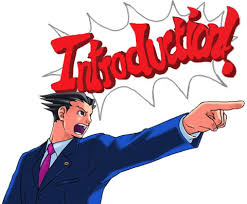



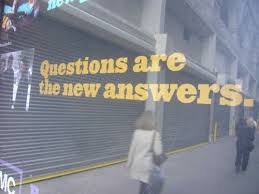
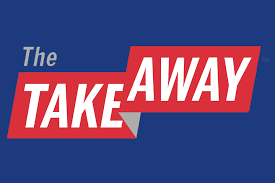




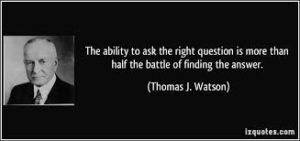



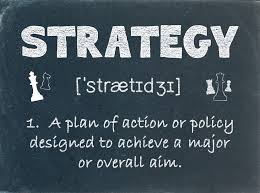

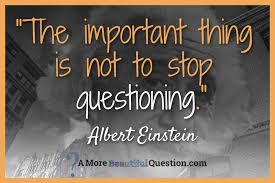

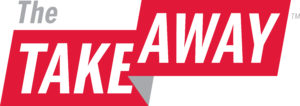


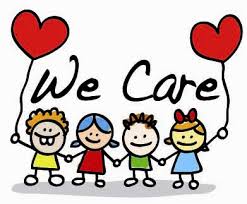
Leave a Reply